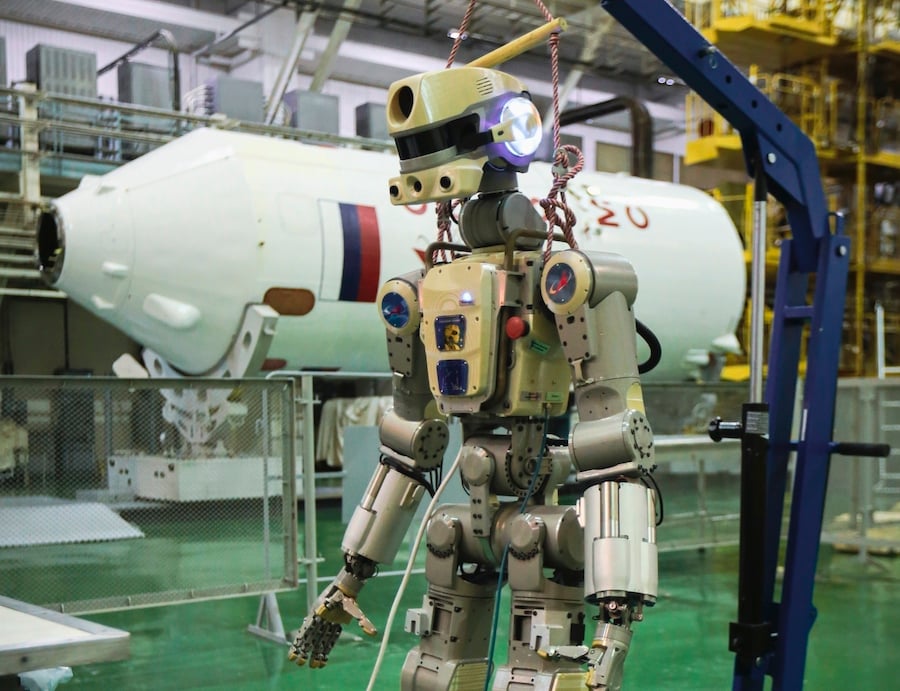MOSCOW, Russia (AFP) — It was second time lucky on Tuesday as an unmanned spacecraft carrying Russia's first humanoid robot into orbit docked at the International Space Station following a failed attempt over the weekend.
"Sorry for the delay. Got stuck in traffic. Am ready to carry on with work," the robot's Twitter account said in a jokey first tweet from space.
Copying human movements and designed to help with high-risk tasks, the life-size robot named Fedor is due to stay on the ISS until Sept. 7.
The robot sat in the commander's seat of an unmanned Soyuz spaceship that blasted off Thursday from a Russian spaceport in southern Kazakhstan.
"Let's go. Let's go," the robot was heard saying during the launch, repeating the phrase used by the first man in space Yuri Gagarin.
Soyuz capsules are normally manned on such trips, but this time no humans were traveling in order to test a new emergency rescue system.
The ship was carrying scientific and medical equipment and components for the space station's life-support system, as well as food, medicines and personal hygiene products for crew members, Russia's Roscosmos space agency said.
After the successful docking at the second attempt, a NASA TV commentator praised the vessel's "flawless approach to the ISS.”
"Second time was a charm... the crew is up to seven," he said, referring to the six astronauts aboard the space station.
Failed attempt
An aborted attempt to dock on Saturday had increased uncertainty over the future of Russia's space program, which has suffered a number of recent setbacks.
Last October a Soyuz rocket carrying an American and a Russian had to make an emergency landing shortly after lift-off — the first failure in the history of manned Russian flights.
On Saturday, NASA had said the Soyuz craft was "unable to lock onto its target at the station.”
Russian flight controllers had told the ISS crew it appeared the problem that prevented automated docking was in the station and not the Soyuz spacecraft, NASA added.
Fedor — short for Final Experimental Demonstration Object Research — can be operated manually by ISS astronauts wearing robotic exoskeleton suits and it mirrors their movements.
Robots like Fedor will eventually carry out dangerous operations such as space walks, according to the Russian space agency.
Its head Dmitry Rogozin told Interfax news agency that the next stage for Fedor could be further tests on Russia's new manned transport ship under development, the Federatsiya, or a spacewalk to work on the outside of the ISS.
"That's what he's being created for. We don't really need him inside the station," Rogozin said.
Fedor is not the first robot to go into space. In 2011, NASA sent up Robonaut 2, a humanoid developed with General Motors that had a similar aim of working in high-risk environments.
It was flown back to Earth in 2018 after experiencing technical problems.
In 2013, Japan sent up a small robot called Kirobo along with the ISS's first Japanese space commander. Developed with Toyota, it was able to hold conversations — albeit only in Japanese.
The International Space Station has been orbiting Earth at about 17,000 mph since 1998.
__
© Agence France-Presse
by Maxime POPOV
Subscribe to Closing Arguments
Sign up for new weekly newsletter Closing Arguments to get the latest about ongoing trials, major litigation and hot cases and rulings in courthouses around the U.S. and the world.









